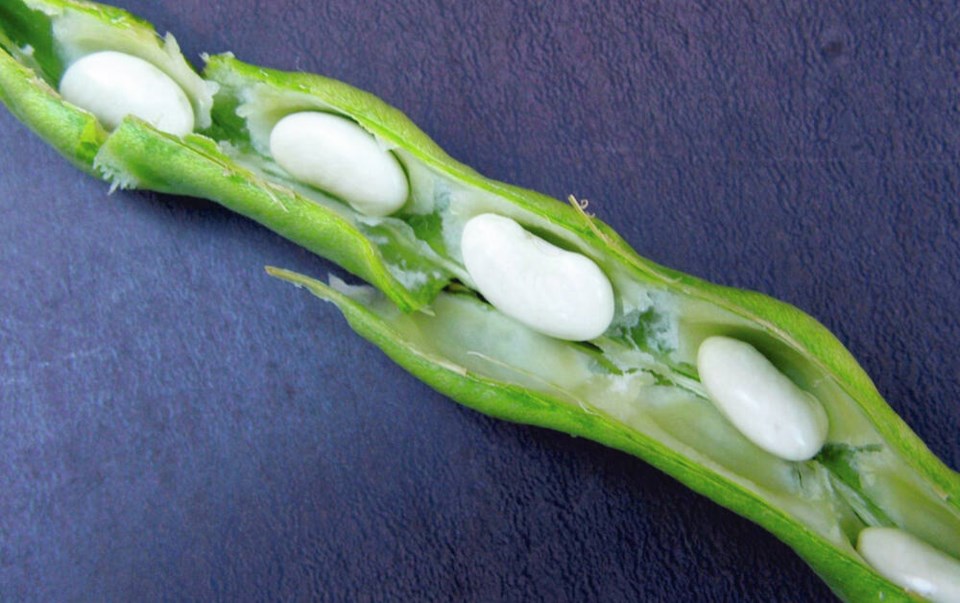A timely email last month reminded me how inspiring for home gardeners seed catalogues and online listings can be.
On a theme of gratitude, Paula and John wrote: “During the pandemic we have been able to spend more time in the garden. Last year, following a Seedy Saturday lecture by Dan Jason (Salt Spring Seeds) in January 2020, we were inspired to try growing dry beans. We were pleased with our harvest and how storing the beans took no valuable freezer space. Our home-grown dry beans were key ingredients in the minestrone soup, vegetarian chili and the black bean brownies that we made.”
The email reminded me of the multiple rows of Dutch Brown beans (William Dam Seeds) friends of mine used to grow every summer. Those beans were used in many different ways over the winter and spring, and were shared out among family and friends as well.
The note from Paula and John also reminded me of a recipe I’d seen for black bean brownies (with espresso ganache) in The Power of Pulses by Dan Jason with Hilary Malone and Alison Malone Eathorne. It’s an enticing, uncomplicated recipe that awaits a chilly, gloomy day clearly calling for the intervention of a decadent chocolate dessert.
Dry beans. That email prompted a visit to the Salt Spring Seeds website and to its section of Heirloom and Organic Warm Weather Beans. The vibrant photos reminded me how beautiful are many dry beans.
I was immediately attracted to Black Coco bush bean, a large, rounded black bean borne on “knee-high” bushes. Like many dry bean varieties, this one is versatile. It can be picked and eaten as an early snap bean, then used as a shell bean before the beans inside the pods are ready to harvest as dry beans in mid- to late August.
Shell beans are a personal favourite treat. At the “shell” stage, the beans are mealy in texture, delicious when steamed tender and seasoned with butter and salt.
Why grow your own. In his introduction to the Heirloom and Organic Warm Weather Beans listings, Dan Jason notes that: “New growers of dry beans will be very pleasantly surprised by how delicious and digestible they are. Dry beans deteriorate as they oxidize. Purchased dry beans are usually a few years old and have lost their lustre. Homegrown dry beans have a vibrancy that you can both see and experience if you eat them before the next year’s harvest.”
Dreams of summer. Autumn gardening is much about preparing for the coming growing season as we entertain visions of summer in our gardens, as Paula and John did in their email: “We have been most thankful for our garden patio made with the help of our adult children during a summer visit in 2019. Situated in the middle of the vegetable beds with intermingled flowers and herbs, it is our favourite place for sitting and relaxing in between gardening chores.
“We enjoy watching the hummingbird in the Crocosmia, bees in the lavender and butterflies flitting from flower to flower. The only drawback: We also see all the work that needs doing!”
Don’t we all know that feeling.
Family Wreath making. The Horticulture Centre of the Pacific, 505 Quayle Rd. in Saanich, is offering Wreath Making for Families workshops on Friday, Nov. 26, Saturday, Nov. 27, Friday, Dec. 3, and Saturday, Dec. 4, from 1 to 2:30 p.m., for family units of up to four people. Greenery and other natural materials are provided to create a long-lived outdoor decoration for your home or garden. Bring gloves and hand pruners. One adult for each participating child or youth is recommended. Fee is $30 per wreath. Register at hcp.ca/events or by phone at 250-479-6162.
Remembrance at Abkhazi. Abkhazi Garden, 1964 Fairfield Rd. in Victoria, will be open on Remembrance Day, Thursday, Nov. 11, from 11 a.m. to 3:30 p.m. Prince Nicolas and Princess Peggy Abkhazi were both interned there during the Second World War. After the war, they reunited and settled in Victoria, where they established the landscape known as “the garden that love built.” It is also a garden that celebrates peace. Enjoy a peaceful stroll through the garden. Free small group tours of the garden will be available. Admission is by donation. The Teahouse will be open for reservations. abkhaziteahouse.com. 778-265-6466.



